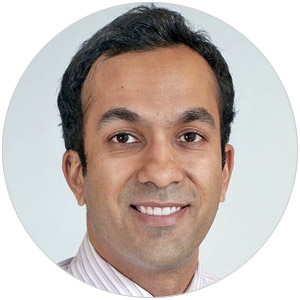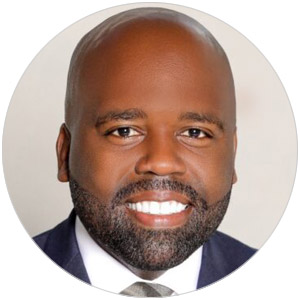
Atul Gupta and Catherine Ishitani Win 2025 NIHCM Research Award
Cited for “Breaking New Ground” in the Field of Hospital Operations
News | Video
This October 6 virtual seminar co-sponsored by University of Pennsylvania’s Leonard Davis Institute of Health Economics (LDI) and Health Affairs focused on how both race-neutral and race-conscious policymaking strategies have failed to effectively address structural racism in health care. Panel members discussed a new Health Affairs paper proposing a switch to racism-conscious policymaking.
Opening the session, moderator Atheendar Venkataramani, MD, PhD, noted, “There’s been increasing interest around advancing health equity as racial disparities in many outcomes still persist. And the key challenges seem to be formally defining what is meant by ‘health equity’ and then operationalizing that definition into action.” Venkataramani is an LDI Senior Fellow and Director of the Opportunity for Health Lab at the Perelman School of Medicine.

The Health Affairs paper by Shekinah Fashaw-Walters, PhD — “Proposing A Racism-Conscious Approach to Policy Making and Health Care Practices” — was a central part of a Health Affairs special October edition entitled “Tackling Structural Racism in Health.” Fashaw-Walters, a seminar panel member, is an Assistant Professor in the Division of Health Policy & Management at the University of Minnesota.
She pointed out to the seminar audience the differences between the three different approaches to health care policymaking:
• Race-Neutral Policies that are theoretically color blind and use non-racial factors such as income to explain racialized differences. This approach attempts to improve health quality and outcomes for everyone, regardless of race. But it doesn’t account for or consider the potential role that racism can play in policy outcomes. She said, at best, this policy maintains health care disparities and, at worst, sometimes exacerbates those disparities. Overall, it falls short of its goal because it doesn’t consider the historical and contemporary forms of structural racism that affect health care access and outcomes.

• Race-Conscious or Race-Based Policies that are aimed at members of specific racial or ethnic groups. These policies can be effective in their intent to improve outcomes for those specific groups, but can also, ironically, run afoul of the 14th Amendment that prohibits race-based discrimination. Under the law, any policy that targets a specific racial group must meet a higher legal standard to be considered non-discriminatory. Fashaw-Walters said the most important shortfall of this policy type is that it fails to acknowledge that racism is the root cause of racialized inequities and not race and fails to directly address all levels of racism. The result is that it leaves racialized groups without full recourse for the historic and contemporary effects of racism in health care.
• Racism-Conscious Policies that are guided by the idea that if race has historically been used to create disadvantage, then we should be able to now use race to create advantage. This policy type directly addresses the role of racism in health care policy choices, policy environments, and the ultimate impacts and outcomes. Its goal is to acknowledge and dismantle historic and contemporary racism structures, at the same time it engages and empowers the community to participate in defining and creating lasting changes.
“In racism-conscious policy, we’re talking about continuous engagement with the community, the centering of their voices, and the shifting of the power and the authority of what happens with our political agendas back to the people that these political agendas and policy agendas are all about,” said Fashaw-Walters.
Venkataramani emphasized that “this idea of a racism-conscious policy approach might be even more important in light of what the Supreme Court has decided around the use of race in college admission decisions, as well as the use of race and prioritizing specific types of patients or groups of patients for COVID-19 therapeutics.”

“What I love about the community engagement aspect of racism-conscious policy is that it connects to the work that I have been involved in around health justice,” said panelist Ruqaiijah Yearby, JD, MPH. “We often talk about health equity and getting each individual to their best health outcome. But health justice requires us to actually begin to address oppression and discrimination including both racism and sexism, ableism, and discrimination against those who are LGBTQIA.”
Raynard Washington, PhD, MPH, the former Chief Epidemiologist and Deputy Health Commissioner for the City of Philadelphia and current Director of the Mecklenburg County Public Health Department in North Carolina pointed out that accurate and ongoing data gathering is a crucial component of being able to think and act in terms of racism-conscious policies at the local government level.
“For instance, part of our goal at the Health Department in Philadelphia was to improve outcomes related to life expectancy. The demographic with the lowest life expectancy was Black men and boys,” Washington continued. “So, if we want to actually improve the health of Philadelphians, we have to do something specifically to improve the health of that group that makes up 20% of the entire population of the city.”

“We are still very much segregated by race in many ways, particularly in terms of where people live and the concentration of people of color in certain parts of communities,” Washington said. “From a racism-conscious perspective, we’ve got to acknowledge the fact that the variation in geography and the segregation by race certainly plays into our need to be hyper focused on certain areas that lack opportunity in a number of ways, or don’t have the tools necessary within their communities to live a healthy life or achieve the kind of health and long lifespan that we’re seeking to achieve.”
Yearby cited the importance of broadening data collection to the people who have the most accurate understanding of how structural racism works in health care and other related systems: members of the racial communities themselves.
“We need to start asking community members explicitly about things related to racism and its discrimination. This means asking them, ‘Have you experienced racism when you went to the doctor? Do you feel like they listened to you? Did they ask you questions about your neighborhood and other things there that might be impacting your health?’ If we are talking about actually addressing racial discrimination and how to eliminate it, we need to ask people who are the best at defining that exact thing and where and how it is experienced.”
As the session ended, moderator Venkataramani asked what was the most important thing that could be done to advance the use of a racism-conscious policy framework.
“We need to connect the concept to move toward the fulfillment of the 14th Amendment, Title VI of the Civil Rights Act of 1964, Section 1557 of the Affordable Care Act,” said Yearby. We have never gotten to the point of ensuring that everybody in this country has equal access to quality health care. So, we need to start working toward that instead of working against each other, because we have enough resources in this country to be able to achieve that. And I look forward to us building the community as we did in the 1960s and 1970s when we had the Black and Brown power movements, to begin to do this work of improving health care for everybody.”


Cited for “Breaking New Ground” in the Field of Hospital Operations

Men are Stepping Up at Home, but Caregiving Still Falls On Women and People of Color LDI Fellow Says

More Flexible Methadone Take-Home Policy Improved Patient Autonomy

Penn LDI Seminar Details How Administrative Barriers, Subsidy Rollbacks, and Work Requirements Will Block Life-Saving Care

His data-driven initiatives risk violating consent, spreading stigma, and reviving vaccine misinformation, LDI Fellow writes.

Top Experts Warn of Devastating Impact on Community Safety Efforts